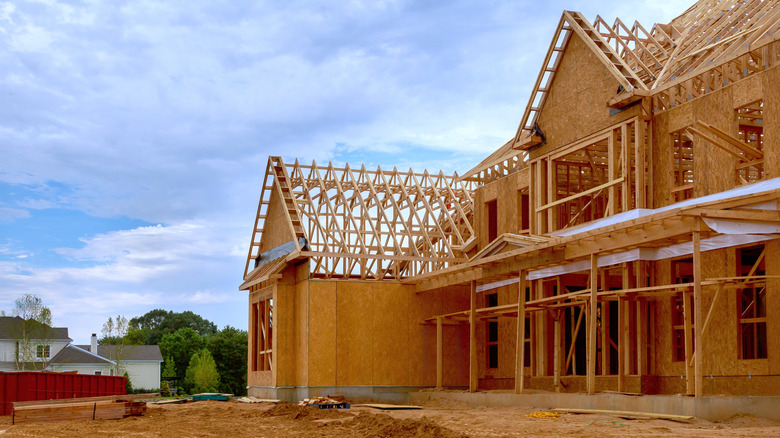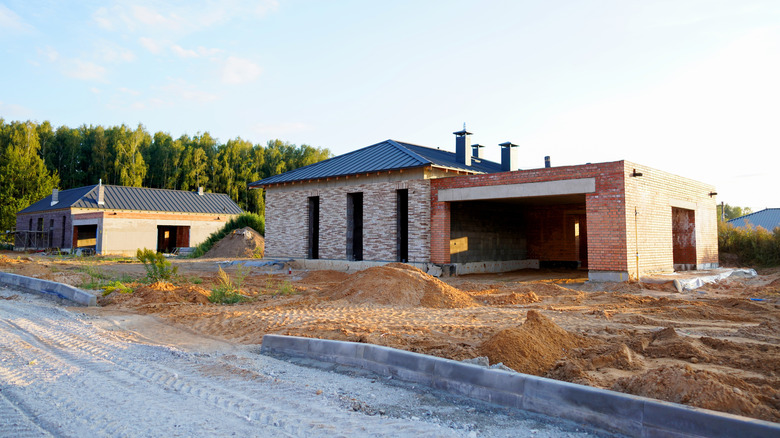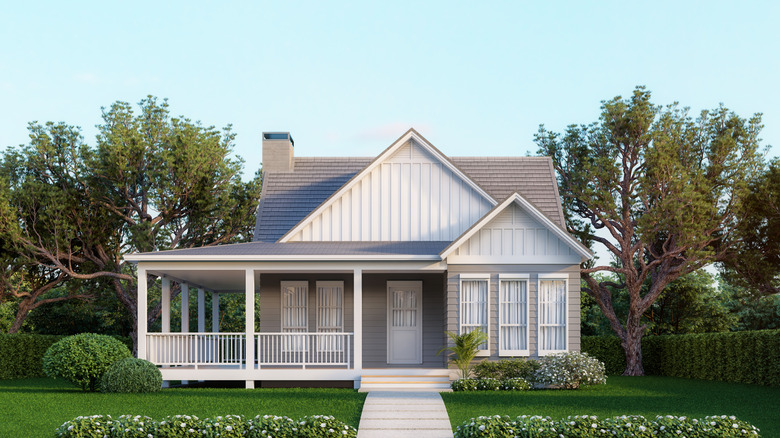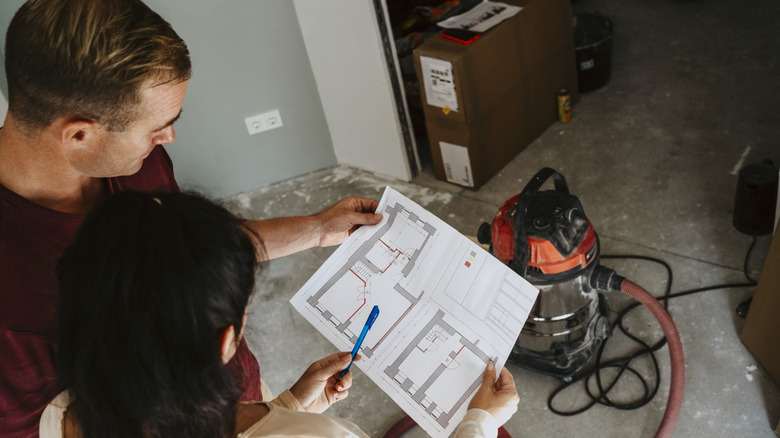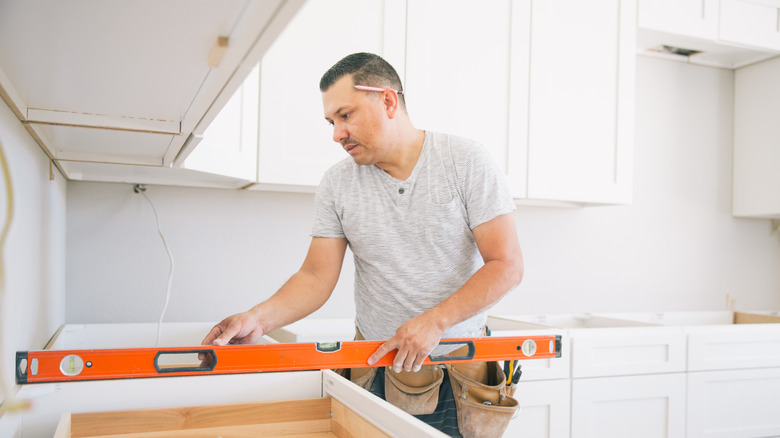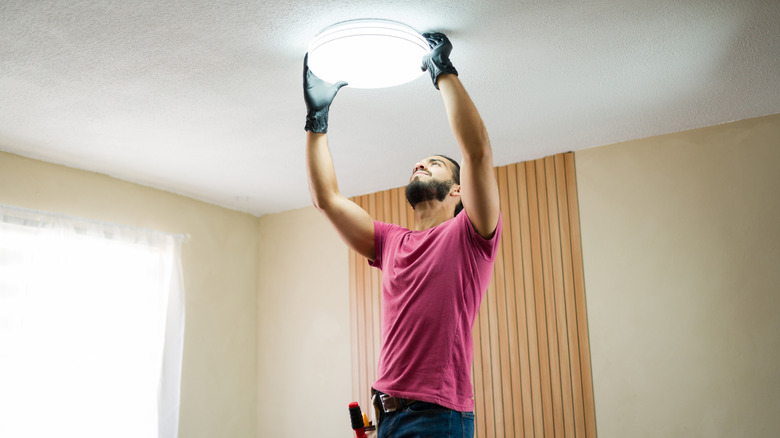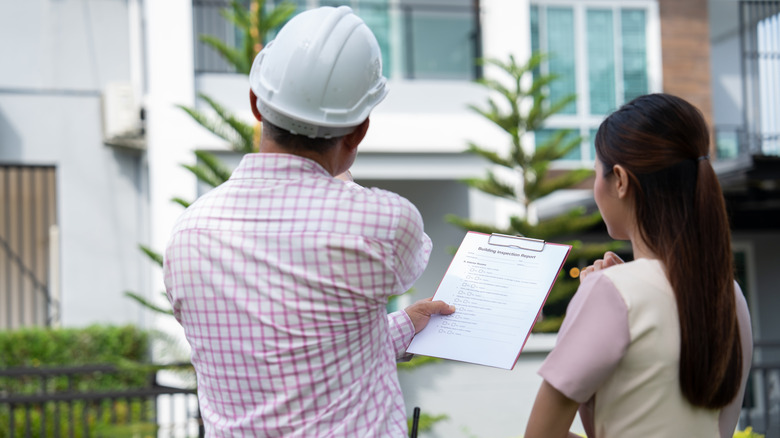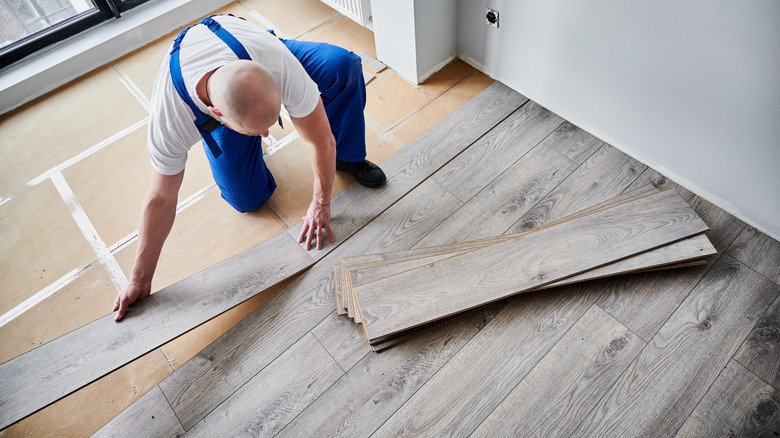11 Tips & Tricks To Make Building A New House More Affordable
We may receive a commission on purchases made from links.
In most cases, a new construction home is going to be a more expensive option than purchasing an existing home. The normal range for building a home is between about $138,000 to over $500,000. As you can tell, that is a pretty wide range — more than a $350,000 difference. So, what determines whether a new home will cost under $150,000 or more than $500,000 to build? Unfortunately, there is no single answer to this question. There are several factors and variables that will come into play.
If you want to make building a new house more affordable, you'll need to gain a better understanding of these factors so that you can use them to inform your decisions. So, we've outlined some of the top tips and tricks that will help you keep your costs under control. This can help you avoid surprises and ensure you're able to build a home that's within your budget.
Don't overlook prefabricated homes as a money-saving possibility
If you're looking at having a new home built, there are different options to consider — some of which can be significantly cheaper than others. One option that can come with significant savings is to build a prefabricated home instead of a stick-built one. Stick-built homes are what you might envision when thinking about building a home from the ground up. Prefabricated homes are just what they sound like. They are fabricated, or made, before being brought to the construction site. Many are delivered in sections that are pre-built, and then those pieces simply need to be assembled. These are sometimes referred to as manufactured homes. Some other types of prefabricated homes include kit homes, which are designed to be easily built by the average homeowner, and modular homes, which allow for a more customizable floor plan.
While the savings can vary based on the specific home and design you choose, opting for a prefabricated home over a stick-built home may save you up to 20%. They also usually allow for shorter construction times. However, there are also some downsides to keep in mind before finalizing your decision. One potentially big one is the delivery fee for the large pieces of the home. If your property is in a more rural area or far from the manufacturing site, the delivery costs could be very high.
Opt for a smaller home than you were initially considering
When you're looking to save money, it often means that you'll need to make some compromises when it comes to your original vision. With a new home, this might mean scaling back your plans. Generally speaking, as the size of the home increases, so too will the cost to build it. Opting for a smaller home, therefore, can keep the price more affordable. On average, you can expect to pay between $60 and $110 per square foot to build a new home. This means that a 3,000-square-foot home would cost between $180,000 and $330,000. On the other hand, one that is only 1,500 square feet, would likely work out to cost between $90,000 and $165,000.
Opting for a smaller home could also help you save money in the future. For example, you'll have a smaller roof, which will cost less to repair or replace than a larger one. You'll also enjoy lower utility costs and have less space that you need to purchase furniture for.
Consider moving to a less expensive area or buying less land to build your home on
The cost to build a new home can vary depending on where you live. Some states have a much higher cost of living, which means that you'll be paying more (sometimes significantly more) for labor. Other regions that are prone to hurricanes, flooding, wildfires, or other natural disasters have different building codes. These codes may call for the use of specific material types to mitigate risk, and this can increase the overall cost of the home. You can't forget the price of the land, either. As a general rule, land in or near large cities is going to be more expensive than it is in a rural area. Certain cities and suburbs can be even more expensive than others, too.
Some of the most expensive areas to build include California, Hawaii, Washington, and New York. These states have large cities and a higher overall cost of living. On the other hand, Arizona, New Mexico, Colorado, and Michigan are among the cheaper states for purchasing land to build a home on. Of course, the costs within different regions of each of these locations can vary, so it is a good idea to do some research if you're thinking about relocating to another state.
In addition to moving to a less expensive area of the country, you could also opt for a smaller lot than you might have originally thought you wanted. As mentioned, the cost of land can vary significantly by state, and even by region within a state. However, even where land isn't as exorbitantly priced, a smaller lot will generally cost less than a larger one. If moving to an area with a lower cost of living isn't an option, then opting for a smaller piece of land might be the way you can turn your dreams of building a new home into a reality.
Place wet rooms in close proximity to one another
Running the plumbing in a new build is another major expense. While you can't get around the need for indoor plumbing — unless you want to go back to the early 1800s — there are ways to keep the costs down. There are many rooms in a home that require water, including the kitchen, bathrooms, and laundry room. When designing a floor plan for your new home, try to place these rooms, or at least several of them, within close proximity of one another. That way, the plumber won't have to run as much piping to reach rooms in every corner of the home.
There are different placement options that can help you keep plumbing installation costs down. For example, you might lay things out so that the laundry room shares a wall with a bathroom. This way, the major plumbing line will just need to be run to that central wall. Then, connections can be added to either side of it, for the washing machine in the laundry room, and the toilet, sink, and shower in the bathroom. Another economical option would be to place one wet room above or below another, such as placing an upper-level bathroom above the kitchen. With this configuration, the plumber will only have to extend the plumbing up one story, which will be a much less involved job than moving it up and halfway across the home. Depending on the specifics of the home and the layout you save, you could potentially save 25% or more when you focus on the plumbing system.
Opt for prefabricated cabinetry over custom
The cabinets can be the most expensive part when remodeling a kitchen or building a new one. Custom cabinets are an appealing option to consider. Because they are custom-built, you are in complete control over their precise dimensions, finishes, and overall design. However, as appealing as they might sound, custom cabinets are not a budget-friendly option or a way to keep your costs down when building a new home. They can cost up to $1,200 per linear foot, but fortunately, they aren't the only option to consider.
You can save a lot of money by opting for prefabricated cabinets instead. As their name implies, these cabinets are made to standard dimensions and come ready to install (sometimes with the need to assemble them first). In addition to their ability to help you reduce your kitchen design costs, ready-to-assemble cabinets can help you get the project completed more quickly. Because they're already made, they should be ready to ship and to get installed quickly, instead of waiting for custom cabinets to be made. However, since they're already made, you won't have many options in terms of style or design to choose from.
There is a third option to consider if you want to keep your costs down, but are looking for something that will give you more control over the finished look of your project: semi-custom cabinets. These cost anywhere from $100 to $650 per linear foot, and they'll still provide you with a wider range of styles and finish options than would be available with prefabricated models. They won't ship quite as quickly as premade cabinets, but should still arrive sooner than you would have to wait for custom ones.
Postpone plans to splurge on appliances
While you will need to add kitchen and laundry appliances to your new construction home, that doesn't mean that you have to pick premium models. Even if your end goal is to get a high-end Wolf range, adding it along with other expensive appliances during your build will only make your initial expenses skyrocket. Compromising with some basic appliances won't decrease the overall functionality of the home. Plus, if you plan accordingly, you'll be able to easily upgrade to the higher-end models that you desire down the road. For example, if your dream is to outfit your kitchen with a large, French door refrigerator, consider starting with a much more affordable option, like the Kenmore 18.2-cubic-foot Energy Star Refrigerator/Freezer. Just be sure to leave enough space in the kitchen layout that you'll be able to fit the larger fridge in the future. That way, upgrading will be a breeze when you have some extra money available.
There are many popular appliance splurges that may not be the best use of funds, especially when you're building a new home and spending money on so many other tasks. Many people don't realize how much the savings can really add up by purchasing base models, at least initially. For example, while you can easily spend $3,000 or more on a high-end range, base models cost closer to $500. Similarly, you can likely find a low-end washing machine for under $500, while luxury models can cost more than $2,000. If you're doing the math, that's a potential savings of $4,000 or more — and we've only discussed two major appliances. It should be easy to see how the savings can really add up when you think about all the major appliances your home will need, including a refrigerator, range/cooktop, dishwasher, washing machine, and dryer.
Don't upgrade light fixtures and faucets through your builder's design center
When you hire a builder for a new construction home, part of the process typically involves visiting the design center to pick out your finishes. However, you might want to think twice about going for the top-notch options and, instead, opt for standard ones. If not, you're going to end up paying a premium to choose upgrades from the design center.
Conversely, if you wait to have new light fixtures and faucets installed after the rest of the home is finished, you might find that you can save a lot of money. There are several attractive lighting options and kitchen and bathroom faucets available online or at local hardware stores. Many of these will likely cost less than what you'll pay at the design center for a nearly identical piece. Keep in mind that an average plumber and electrician will typically charge somewhere around $100 per hour, though this can vary based on where you live and the scope of the project. You could use this information, along with the cost of the fixtures at the design center versus retail stores, to determine the best course of action.
Another thing to consider is that the price of any fixtures you choose from the design center will likely be rolled into the total cost of the home. This could be a benefit in some ways because you won't have to come up with the cash to cover them right away. However, it also means that you'll end up paying even more for them over the length of the loan because of the interest that's charged.
Choose the right home builder
Chances are, there are several home builders in your area. Instead of just working with the first one you contact, it's imperative to conduct some research. The final cost of your build will vary depending on which company you choose. So, just as you would ask a contractor questions before scheduling a renovation project, it will be imperative to have a list of questions ready to discuss with each company. Ask about what, if any, incentives are being offered. These incentives, which builders use to encourage buyers to choose them over other companies, could include free or discounted upgrades for fixtures or other materials, covering a portion of the closing costs, or even lower interest rates.
While looking for incentives and cost-saving opportunities is important, just make sure that you're still vetting the reputation of any companies you might work with. Check out online reviews and ask for references. You want to make sure that you're working with a legitimate company that is going to deliver on the promises they're making.
Plan carefully and avoid making changes
One thing that can really take your budget for a ride is making changes to your plan after construction has already started. The builder will likely have spent a considerable amount of time drawing up plans, ordering materials, or even beginning to build and install things. Any modifications to the original design will require a change order, which will add more work for the builder. They may have to rework the design to accommodate your decision to add a shower and a freestanding bathtub to the bathroom. They will also need to order new materials to comply with a decision like switching from standard quartz countertops to more eco-friendly glass composite ones.
Not only will you be responsible for covering the costs of any additional materials, but you'll also have to pay for the builder's time and effort to accommodate your requests. Waiting for new materials to arrive can even extend the project's timeline and throw off the builder's schedule. For these reasons, you could end up spending significantly more than you would have paid if the design was all laid out from the beginning. So, to avoid these added expenses, don't rush through designing the home and selecting materials. Take time to really soak in the plan and think through any potential hurdles or roadblocks before everything gets finalized. Walk through several model homes to help yourself feel comfortable about the specific materials and finishes you're choosing to avoid changing your mind later.
